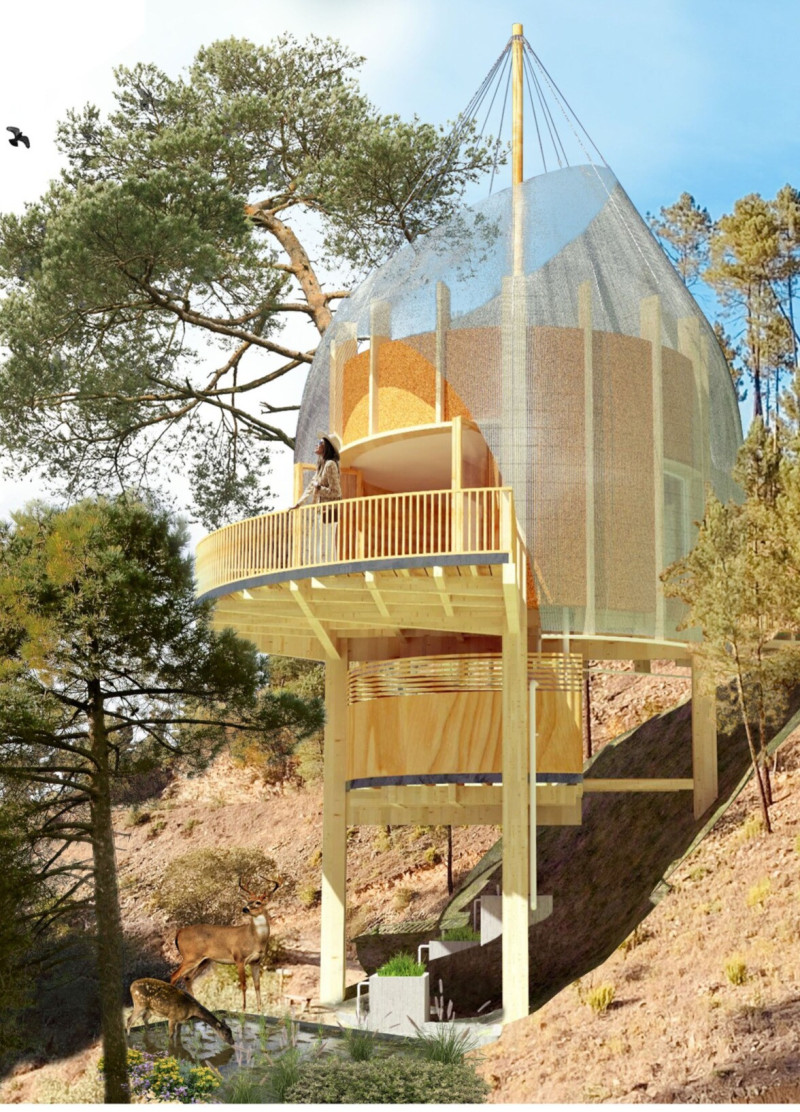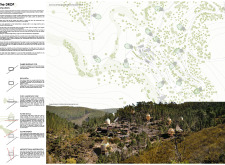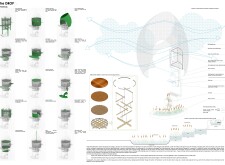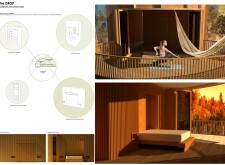5 key facts about this project
The project titled "The DROP" is an architectural design that aims to create a sustainable living environment harmonizing with the natural landscape. Positioned in an area characterized by vast valleys and forests, this design integrates human habitation with the ecological context. The primary function of the project is to provide flexible living spaces that enhance the occupants' interaction with nature while maintaining a minimal environmental footprint.
The project features a series of timber sleeping pods strategically scattered across the site, positioned to maximize views of the surrounding landscape. Each pod is elevated above the ground to minimize disruption to the topography and allow for natural ventilation. The choice of local timber reflects a commitment to sustainability while providing an aesthetic quality that connects the structures with their environment. The design incorporates pathways that weave through the trees, facilitating movement between the sleeping pods and communal areas.
Unique Design Approaches
One of the distinguishing characteristics of "The DROP" is its integration of advanced energy and water systems within the architectural framework. The use of rainwater harvesting and fog moisture collection systems not only contributes to water sustainability but also minimizes the demand for external resources. This approach aligns with contemporary ecological demands, guiding the project toward a self-sufficient model.
The architectural design further employs solar panels that blend with the overall aesthetic, demonstrating a commitment to renewable energy sources. This integration of technology and architecture creates a cohesive living experience that encourages energy efficiency. The modular furniture within the sleeping pods is specifically designed for the compact spaces, contributing to functionality without sacrificing comfort.
Materials and Construction Techniques
The project’s material palette consists mainly of locally sourced timber, which is used for both structural elements and interior finishes. This choice supports local economies and reduces transportation emissions. Glass elements are strategically placed to maximize natural light and provide uninterrupted views of the landscape, reinforcing the connection between the interior and the exterior.
The architectural plans detail the structural layout and the relationship between various elements of the project. The architectural sections illustrate the pod design’s elevated structure and integration with the topography, showcasing a balanced interaction between built and natural environments. These technical drawings provide insights into the design's practical execution and spatial organization.
The comprehensive architectural ideas presented in "The DROP" reflect a thoughtful approach to modern sustainable living. The focus on environmental harmony, user engagement, and innovative resource management positions this project as a relevant case study in contemporary architecture. For a thorough understanding of the design, readers are encouraged to explore the project presentation, which includes architectural plans, sections, and visualizations that enhance the understanding of this unique architectural endeavor.





















































